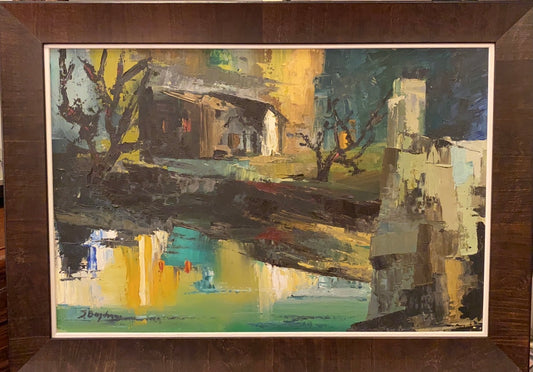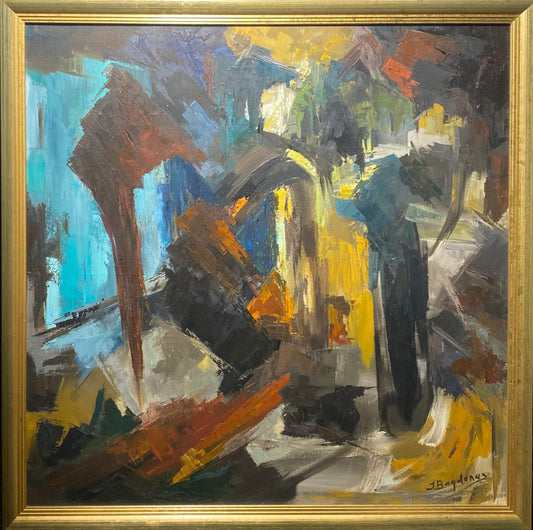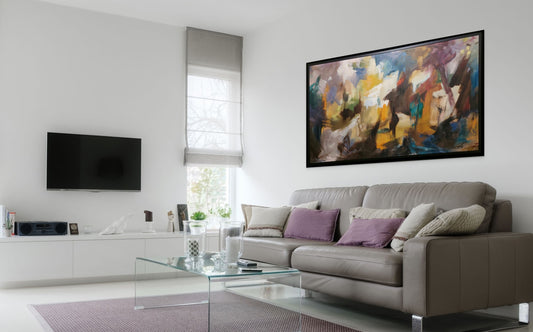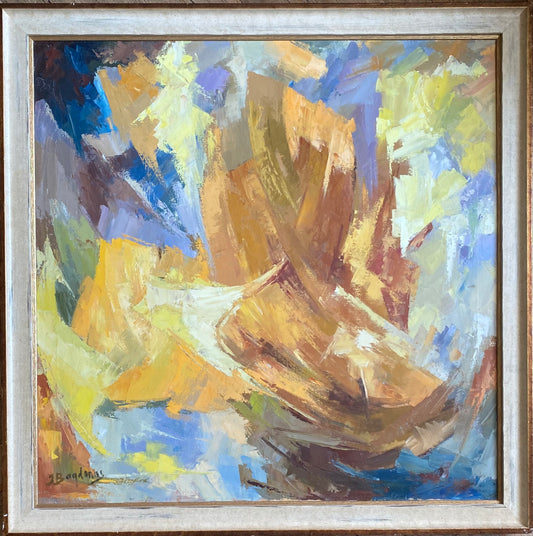Collection: Juozas Bagdonas
1911–2005, Lithuania
Born in 1911 in Antruoji Videikiai (Plungė district). From 1929, Juozas Bagdonas studied at the Kaunas School of Art and in J. Vienožinskis' studio. The first exhibition was held in Kaunas in 1933, later in Riga, Tallinn. In 1938, at the age of just 26, the artist won the first state prize for a figurative composition "Returning from the Sea" at an exhibition in Kaunas commemorating the 20th anniversary of Lithuania's Independence. From 1938 to 1940, he was the secretary of the board of the Lithuanian Artists' Union. From 1941 to 1944, he worked at the Vilnius Art Museum (now the Lithuanian Art Museum), and at the Vilnius School of Decorative Arts. In 1944, he left for Germany, and in 1948, for Bogotá, Colombia. From 1948 to 1958, while living in Bogotá, Colombia, he established a studio for modern ceramics and decorative sculpture, creating abstract compositions by modeling and glazing with vivid colors. Later, in 1958, after settling in the United States, the artist worked as a painter of abstract expressionism style but sometimes created spatial, abstract constructive sculptures. In 1960, he held the first exhibition of abstract art at the Lithuanian House in Baltimore, and later his exhibitions were exhibited in other Lithuanian colonies: in Philadelphia, Chicago, Detroit, Boston, Toronto, Hamilton, Cleveland, Los Angeles, Hartford, Woodhaven. In 1960, he founded a prestigious art gallery in Washington, D.C., where he organized exhibitions of American artists. After the restoration of independence in Lithuania, he held exhibitions in Lithuania: in 1992 in Vilnius, in 1993 in Kaunas, in 1993 in Plungė. From 1999, he lived in Plungė. His works are held by museums in Vilnius, Kaunas, Plungė, Klaipėda, Telšiai, and by collectors in Lithuania and abroad. In 1972, he published the album "Juozas Bagdonas". He died in 2005 in Plungė.
Juozas Bagdonas' oeuvre evolved in constant change, oscillating between realistic painting in the Lithuanian period and impressionistic German period watercolor landscapes. In 1958, he returned to oil painting, but it was already influenced by abstract expressionism. Early paintings are characterized by stylized organic and geometric shapes and contours typical of abstract painting of that time, vitrally framing the forms. In the mid-1960s, a unique style emerged, conveyed by bold, energetically applied abstract forms constructed with a wide brush – clear, rough, solid. The composition of these forms is characterized by dynamism – they whirl, burst, rise and fall, creating the impression of a changing yet firmly restrained element. The painter uses combinations of pure, vivid colors - reds, yellows, blues - often including dark - black, brown tones, giving the color scheme a sense of bitterness, severity.
Prepared according to: Laučkaitė L. (2003). Lietuviai anapus tradicinio modernizmo. In: Išeivijos dailė (p. 132). Vilnius: KFMI.
-
Juozas Bagdonas | Landscape | Oil, cardboard, 50,5x76
Regular price €1.500,00Regular priceUnit price / per -
Juozas Bagdonas | Abstraction | Oil on canvas, 88x88
Regular price €3.000,00Regular priceUnit price / per -
Juozas Bagdonas | Abstraction | Oil on canvas, 98x184 (107x194)
Regular price €5.000,00Regular priceUnit price / per -
Juozas Bagdonas | Abstraction | Oil on canvas, 86.5x86.5 (97x97)
Regular price €2.000,00Regular priceUnit price / per








